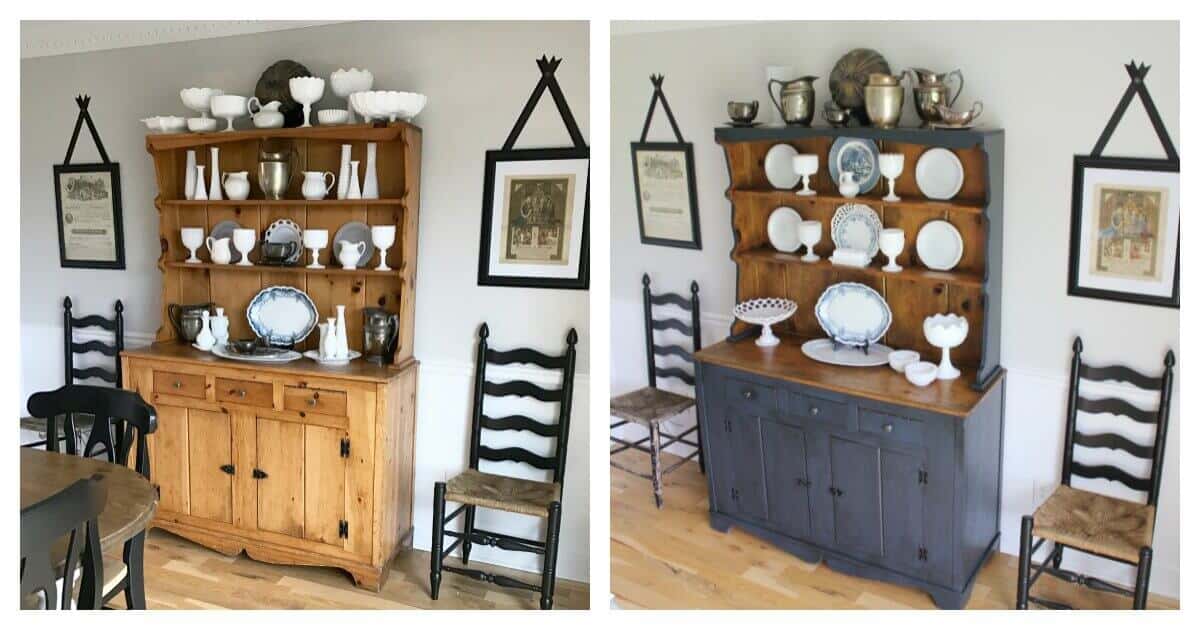In a world of disposable furniture and fast fashion trends, there is a growing movement towards reviving and restoring classic pieces that stand the test of time. The art of furniture restoration not only breathes new life into old pieces, but also gives us the opportunity to infuse our own personality and style into beloved classics. From refinishing to reupholstering, the possibilities for transforming vintage furniture are endless. Join us as we explore fresh ideas for reviving classics and bringing them back to their former glory.

Reviving Classic Furniture Pieces with a Modern Twist
Are you a fan of classic furniture pieces but want to give them a fresh, modern twist? Look no further! Reviving classics is all about breathing new life into old furniture and making them fit seamlessly into a contemporary space. With a few creative ideas and some DIY skills, you can transform outdated pieces into statement-making decor.
One way to revive classic furniture is to mix and match different styles. Pairing a traditional Victorian armchair with a sleek, minimalist coffee table creates an interesting contrast that adds character to your room. Another idea is to update the upholstery with bold, modern fabrics. A vintage loveseat can be transformed into a trendy conversation piece with a vibrant velvet cover or geometric patterned fabric.
Don’t be afraid to experiment with colors and finishes when reviving classic furniture. A coat of bright, glossy paint can breathe new life into a tired dresser or side table. Alternatively, stripping back layers of old paint to reveal the natural wood grain can give a piece a chic, Scandinavian look. Embracing imperfections and embracing the antique charm of a piece can also add a unique touch to your furniture restoration project.
Exploring Innovative Techniques for Restoring Antiques
Looking to breathe new life into your old antiques? Dive into the world of innovative techniques for restoring furniture and bring back the charm of classic pieces. From unique finishes to creative repairs, there are endless possibilities for reviving your beloved antiques.
One fresh idea for furniture restoration is utilizing decoupage techniques to add a modern twist to traditional pieces. By carefully selecting and applying decorative paper or fabric to the surface of furniture, you can create a stunning and personalized finish that seamlessly blends the old with the new. This method allows for endless customization options, making each piece truly one-of-a-kind.
Another innovative approach to antique restoration is using unconventional materials to repair and enhance furniture. Instead of traditional wood filler, consider experimenting with epoxy resin for structural repairs or adding metal accents for a contemporary touch. These unexpected materials can add a unique flair to your antiques while preserving their historical character.
Incorporating Contemporary Design Elements into Traditional Pieces
When it comes to furniture restoration, there is a timeless appeal in breathing new life into traditional pieces by incorporating contemporary design elements. This fusion of old and new creates a unique and fresh aesthetic that revitalizes classic furniture.
One way to modernize traditional pieces is by adding bold and unexpected colors to create a vibrant contrast. For example, a classic wooden dresser can be transformed with a coat of bright turquoise paint, instantly giving it a modern edge.
Another technique is mixing materials to add texture and interest to furniture. Combining metal accents with wood or glass can create a sleek and contemporary look that elevates the piece to a whole new level.
Tips for Choosing the Right Color Palette for Furniture Restoration
One of the key aspects of furniture restoration is choosing the right color palette to breathe new life into old pieces. Whether you’re looking to modernize a classic piece or restore it to its former glory, selecting the perfect colors can make all the difference. Here are some fresh ideas to help you revitalize your furniture with a new color scheme:
1. Consider the design style:
When choosing a color palette for furniture restoration, consider the design style of the piece. For example, if you have a mid-century modern sideboard, you might want to opt for bold, retro colors like mustard yellow or teal. On the other hand, if you’re restoring a Victorian armchair, you may want to stick to more traditional, muted tones like deep burgundy or forest green.
2. Think about the room:
Take into account the room where the restored furniture will be placed. Is it a cozy living room, a minimalist dining room, or a vibrant bedroom? The color palette should complement the existing decor and create a harmonious atmosphere. For instance, if your bedroom has a calming blue color scheme, you might want to choose a complementary color for your restored dresser, such as a soft cream or pale pink.
| Color Scheme | Suggested Furniture Pieces |
| Neutral tones (beige, taupe, ivory) | Living room sofa, dining room table |
| Warm hues (rust, terracotta, mustard) | Armchairs, coffee tables |
| Cool shades (teal, navy, lavender) | Bed frames, bookshelves |
Remember, the right color palette can transform a worn-out piece of furniture into a stunning focal point in your home. Take your time to experiment with different colors and combinations until you find the perfect match for your furniture restoration project. As we conclude our exploration into reviving classics through innovative furniture restoration techniques, we hope you have been inspired to breathe new life into your own cherished pieces. By embracing creativity and thinking outside the box, the possibilities for transforming tired furniture into stunning statement pieces are truly endless. So go ahead, unleash your imagination and let your furniture restoration journey begin. Happy reviving!



